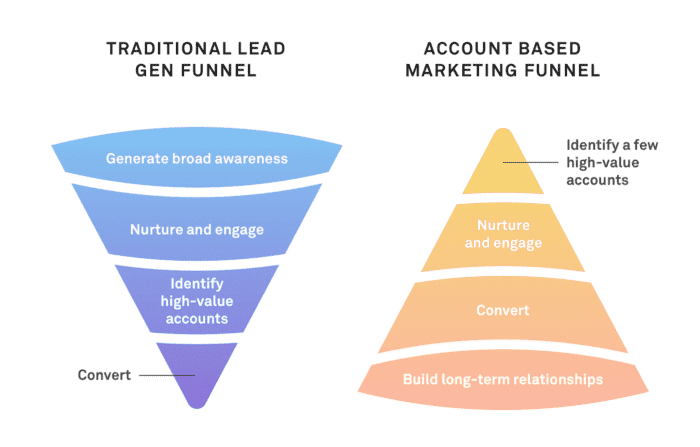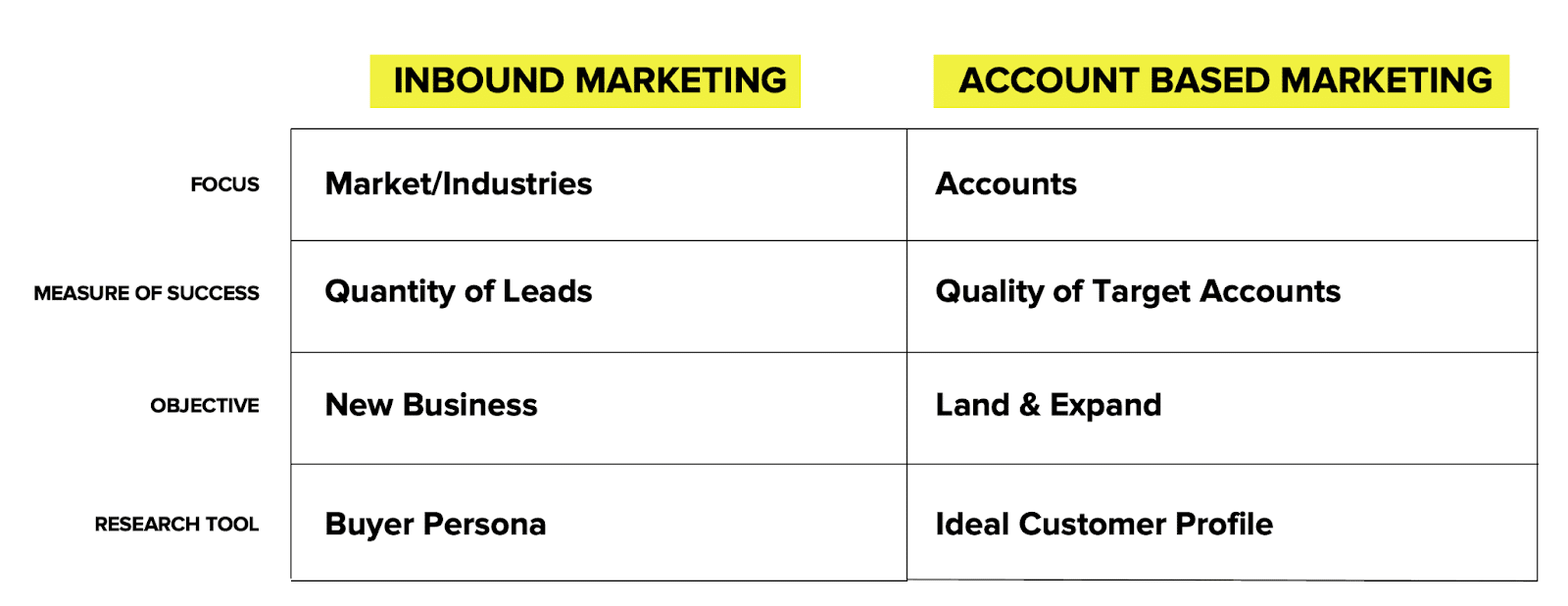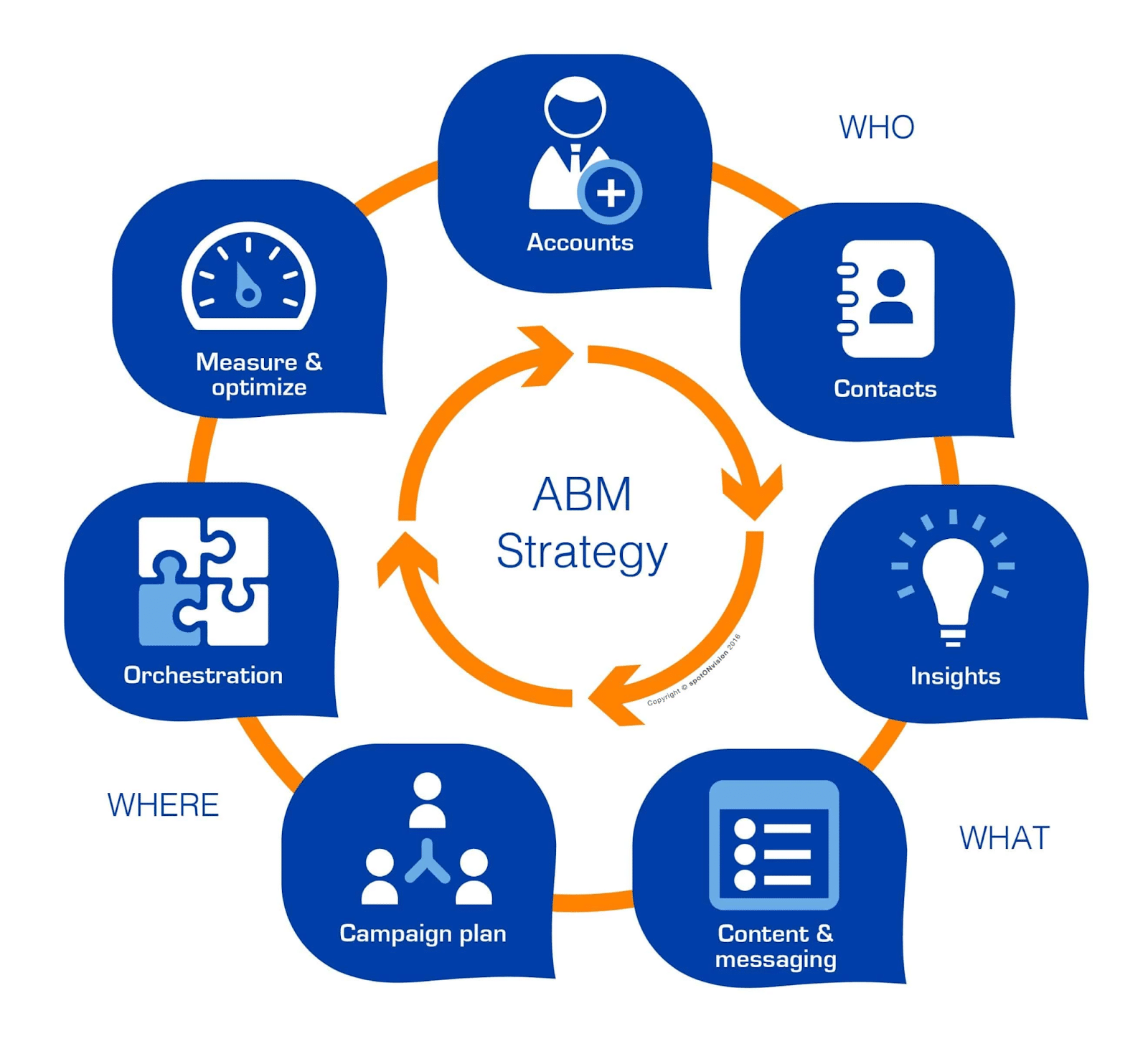How To Create An Effective Account-Based Marketing Funnel In 6 Steps?
Updated on May 25, 2024
What is an Account-Based Marketing Funnel?
An account-based marketing funnel represents the journey an interested prospect account takes to become a paying customer. Unlike a traditional funnel, an ABM funnel focuses on one particular account and its customer journey.
It was not so long ago that every B2B business was focused on generating leads. However, a focus on specified approaches and activities that added to revenue generation soon came to light. Thus, account-based marketing was born as an alternative to traditional lead generation.
With ABM, B2B businesses can target accounts and pursue quality rather than quantity. This approach is not only efficient but also produces better results in terms of revenue. With reports suggesting that 6.8 stakeholders are involved in making a B2B purchase decision, account-based marketing is the only way to target and engage multiple contacts from the same organization for a single deal.
Curious to know how an account-based marketing funnel operates? In this blog, we will discuss what an account-based marketing funnel is, how it is different from a traditional marketing or sales funnel, what an ABM funnel looks like, its characteristics, and the different stages involved in creating an ABM funnel.
What is an Account-Based Marketing Funnel?
In essence, an ABM funnel is similar to any traditional sales or marketing funnel. It is a framework of activities tied into one another. These activities start with identifying the target accounts and end with converting them into customers.
The difference is in how this entire process is structured and functions. The core objective with ABM is to target specific high-value accounts and tries to convert them. Thus, the ABM funnel incorporates activities that facilitate the completion of this objective.
To start with, target accounts are selected. This can be done with a collaboration between the sales and marketing teams.
Accounts are targeted based on how well they match your B2B business’s ideal customer profile, the value, and quality of the account, and ease of conversion.

Source: equinetmedia.com
Following this, a strategic marketing plan is set in to be executed. Based on the target account and its identified contacts, marketing efforts are tailored. The contacts are exposed to personalized marketing content to ensure you capture their attention and make the leads warm.
The next step involves engaging with these contacts and establishing a positive relationship with them. Once the above steps have been completed, the sales team can make their approach. When all of the above steps are planned and executed properly, these leads can take the usual route to conversion. As this approach relies on quality rather than quantity, revenue generation is maximized while minimizing costs.
So, how is an ABM funnel different from a traditional marketing or sales funnel? Let’s understand it below.
How is an ABM Funnel Different From a Traditional Marketing or Sales Funnel?
To understand the true value of an ABM funnel, let’s revisit how marketing and sales funnels work.
Marketing Funnel
A marketing funnel focuses on building brand awareness and generating potential leads for your business. It involves the following stages —
- Awareness: Attracts a broad audience through channels like social media, blogs, and ads to build brand recognition.
- Consideration: Engages prospects by providing valuable content, such as newsletters, ebooks, and webinars, to spark curiosity and educate them about the product or service.
- Conversion: Qualifies leads that could become prospective customers. They may be passed over to the sales staff or sent to your website to complete a purchase.
- Loyalty: Develops a reputation that ensures customers make repeat purchases.
Marketing activities can vary based on stage. For instance, the awareness and consideration stages involve SEO, PPC advertising, and content marketing while the conversion and loyalty stages involve targeted nurturing campaigns.
Sales Funnel
A sales funnel maps out the entire customer journey, from awareness of your brand offerings to hesitant prospects’ converting into paying customers.
- Awareness: A qualified lead, acquainted with your brand but not fully aware of your offerings, steps into the sales funnel.
- Interest: Marketing-qualified leads turn into sales-qualified leads by learning more about your brand and how it might meet their needs.
- Decision: Potential customers are aware of your company’s offerings but may still have concerns regarding pricing and integrations.
- Action: Prospects make a purchase for your product or service at an agreed-upon price, turning into members of your brand’s community.
- Loyalty: Existing customers promote your product or make a repeat purchase.
Sales activities may also vary based on stage. For instance, the awareness and interest stage may involve inviting prospects to webinars or signing up to your product newsletter while the decision, action, and loyalty stages may involve delivering product demonstrations, conducting price negotiations, and offering member benefits respectively.
ABM Funnel — A Combination of Marketing and Sales
While the marketing funnel focuses on attracting potential customers and a sales funnel concentrates on turning qualified prospects into paying customers, an ABM funnel combines both actions ensuring there is seamless alignment between marketing and sales.
Incorporating the best practices from both marketing and sales, an ABM funnel focuses on one target account at a time. Unlike traditional funnels with a wider approach, an ABM funnel involves highly targeted campaigns where sales and marketing work together to convert customers.
Moreover, the loyalty phase in traditional funnels is primarily concentrated on pre-sales; however, in ABM funnels, there is a consistent focus on loyalty throughout the customer journey. Targeting solely on the most appropriate accounts, this shift towards a more tailored strategy enables companies to save money and strengthen customer loyalty leading to better results.
How does an ABM Funnel look?
As mentioned before, an ABM funnel is similar to any sales or marketing funnel. However, in terms of the framework and structure, it is entirely different.
Take any standard sales funnel, flip it vertically and you have an ABM funnel.

Source: getvoip.com
The targeted approach of ABM is visualized in the ABM funnel. Narrow at the top, this approach is a complete deviation from traditional marketing. Every team involved in generating revenue works together to make a combined effort at identifying the target high-value accounts. Being a good fit for a B2B business’s ICP raises the chances of conversion right from the initial stage.
The next step involves identifying the stakeholders of the purchase decision and focusing your marketing activities on them. With the help of personalization and relevant content, a positive impression is created on these contacts.
Having these contacts aware of your brand and the value proposition of your products makes the job of the sales team easier. The conversion is not only ensured but requires fewer resources and generates big returns in terms of revenue.
However, doesn’t stop at conversion. Building a long-term positive relationship with the account and contacts therein is also an objective.
More gains can be made by assured reorders and asking to be referred to contacts of other high-value accounts.
With the structure and function of an ABM funnel understood, let us understand the characteristics of an ABM funnel.
Characteristics of an ABM Funnel
While the ABM funnel diagram exhibits a lot of its characteristics, the details of it are left out. Here we will see the characteristics of an ABM funnel at each of its stages.

Source: drift.com
A Targeted Approach
A traditional funnel tries to gather as many leads as it can. An ABM funnel takes a different approach by identifying and targeting the most suitable and high-value accounts.
This is evident with the ABM funnel’s narrow top. A targeted approach produces better results as accounts are selected by filtering them against your ICP. This saves a lot of resources and marketing efforts by only targeting the best suitable accounts.
Identifying Decision Makers
Once a particular account has been selected, all the key decision-makers are identified. These decision-makers can belong to different departments and work at different levels within their organization. As a result, the ABM funnel expands.
Information is collected about these decision-makers that enable all the necessary processes during the next stage in the sales funnel. The information gathered is validated and readied for formulating marketing content.
Targeting Contacts with Personalized Marketing Content
The information collected previously is now used to provide a personalized marketing experience to all the identified decision-makers. This improves the customer experience and raises the chances of conversion. They are slowly warmed up.
Tools like LinkedIn Sales Navigator are commonly used to identify accounts and various stake holders. Another strategy that can be used is where accounts from your website are identified and turned into ABM opportunities.
Multi-stakeholder Outreach
The reception of personalized marketing content by the contacts is gauged. Based on the insights the personalization is tweaked. Once leads are warmed up, the sales team can start engaging with these contacts.
Engaging with these contacts helps build a positive relationship and understanding their pain points before going for the pitch. With more activities and individuals involved at this stage, the ABM funnel further expands.
Conversion and Building Long-term Relationships
Using all the advancements made until the previous stage, the sales team can act on all the identified opportunities and make a sales pitch.
With all intent and account data in possession, sales teams can understand intent, gauge pain points, and provide the solution. The next step post-conversion is to build a long-term relationship with the account and consolidate customer retention and be open to opportunities.
Defining Stages and Creating an ABM Funnel

Source: engagebay.com
Stage 1: Identifying High-value Target Accounts
To start with, you will have to account for inputs from all the revenue-generating teams in your business. These will be regarding creating an ICP for your firm that will be used for selecting and targeting high-value accounts.
This is a classic revenue marketing approach where sales and marketing work towards the common goal of revenue.
Stage 2: Identifying Key Internal Decision Maker
The purchase decision will involve multiple stakeholders. Every stakeholder will be targeted and engaged with relevant. Based on the nature of your offerings, you will have to identify key decision-makers within a targeted account.
Stage 3: Personalizing Marketing
Once the key internal decision-makers have been identified, collect and analyze all available data about them. This can help with marketing personalization.
You can tailor your message, marketing content, and channels for delivery accordingly, that best suit the preferences of the intended contact for the targeted account.
You also need to create content that will talk to each contact about alleviating their pain points and raising the efficiency of the business process. This targeted approach will create positive impressions for your offerings in all contacts.
Stage 4: Executing a Coordinated Campaign
With content and strategy finalized, what remains is the execution. This campaign needs to be executed in coordination with all revenue-generating departments. With everyone in sync, the efforts can be focused on converting the target account.
The information about the contacts can be used to match them with the most capable sales executive. Ensuring this results in proper engagement and enhancement in the contacts’ experience with your business. This positive experience combined with earlier buildup adds significantly to your chances of closing the deal.
Stage 5: Building a Healthy Relationship with the Account
Closing the deal is not the end of the process. Retaining existing customers is as important as bringing in new ones. Considering the high ticket values of the B2B sector, every retained account can add a lot to your revenue.
Thus, it needs to be ensured that you are available to be heard by existing customers and engage with them regularly. This nurtures a long-term relationship and might present more opportunities for your business in the future.
Stage 6: Measure, Analyze, Optimize
Creating a good ABM funnel will benefit you in the short term. However, in the long run, you will need to make changes to it to suit the prevailing market condition.
For this, you will need to measure the performance of your ABM funnel periodically. You will need a different set of KPIs as the standard marketing ones do not work here.
Once you have suitable KPIs, measure the performance periodically and make adjustments to your ABM funnel to keep it in line with the desired level of performance.
To Conclude With
Account-based marketing is a viable acquisition model for businesses targeting ACV deals. The leads are highly qualified and engaged through a predictable sales and marketing aligned model and converted into customers.
An ABM funnel is pretty straightforward and can easily be implemented by businesses. Leverage it today to optimize your marketing and sales efforts and drive impressive results!
Sell more, understand your customers’ journey for free!
Sales and Marketing teams spend millions of dollars to bring visitors to your website. But do you track your customer’s journey? Do you know who buys and why?
Around 8% of your website traffic will sign up on your lead forms. What happens to the other 92% of your traffic? Can you identify your visiting accounts? Can you engage and retarget your qualified visitors even if they are not identified?


